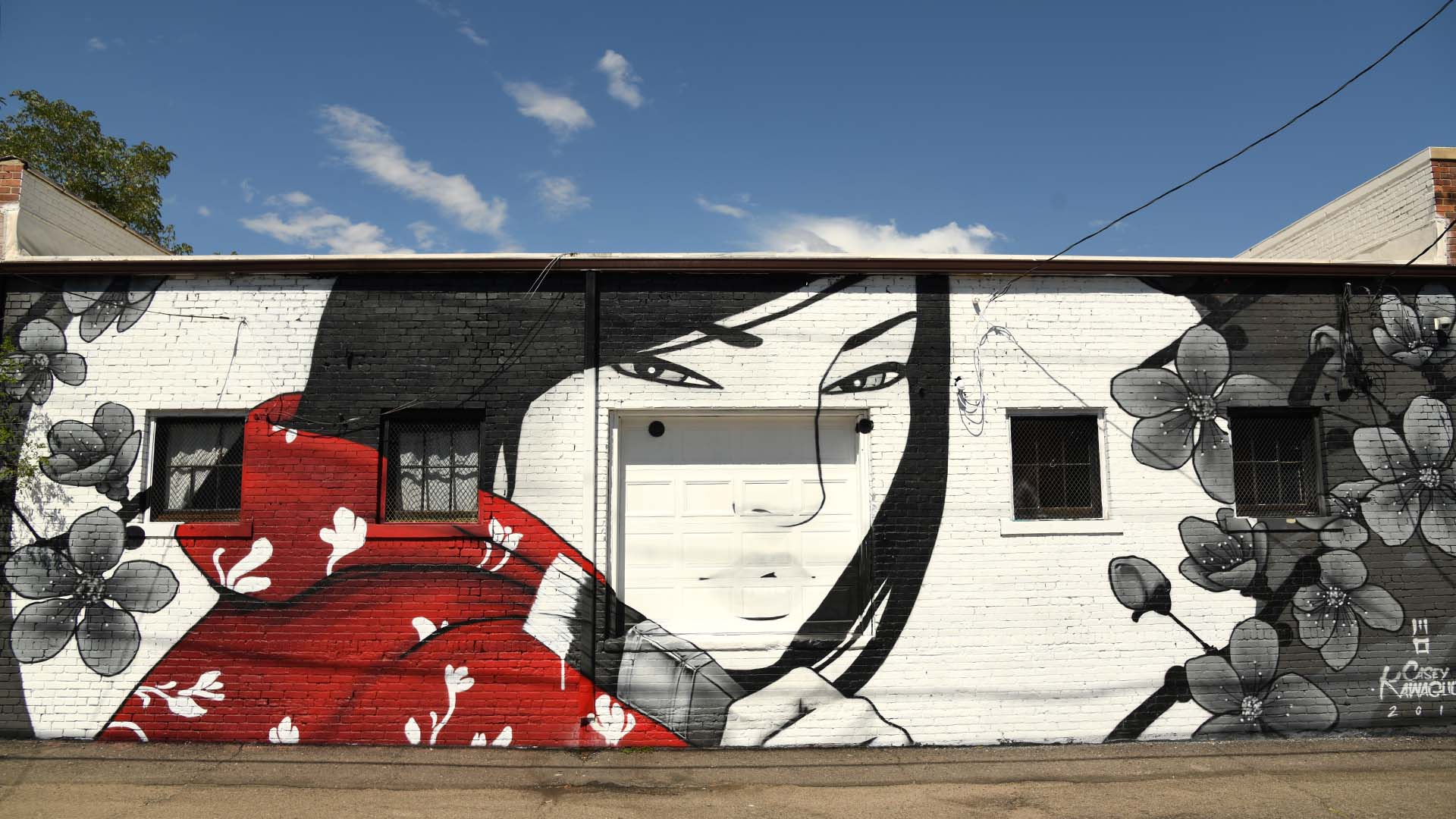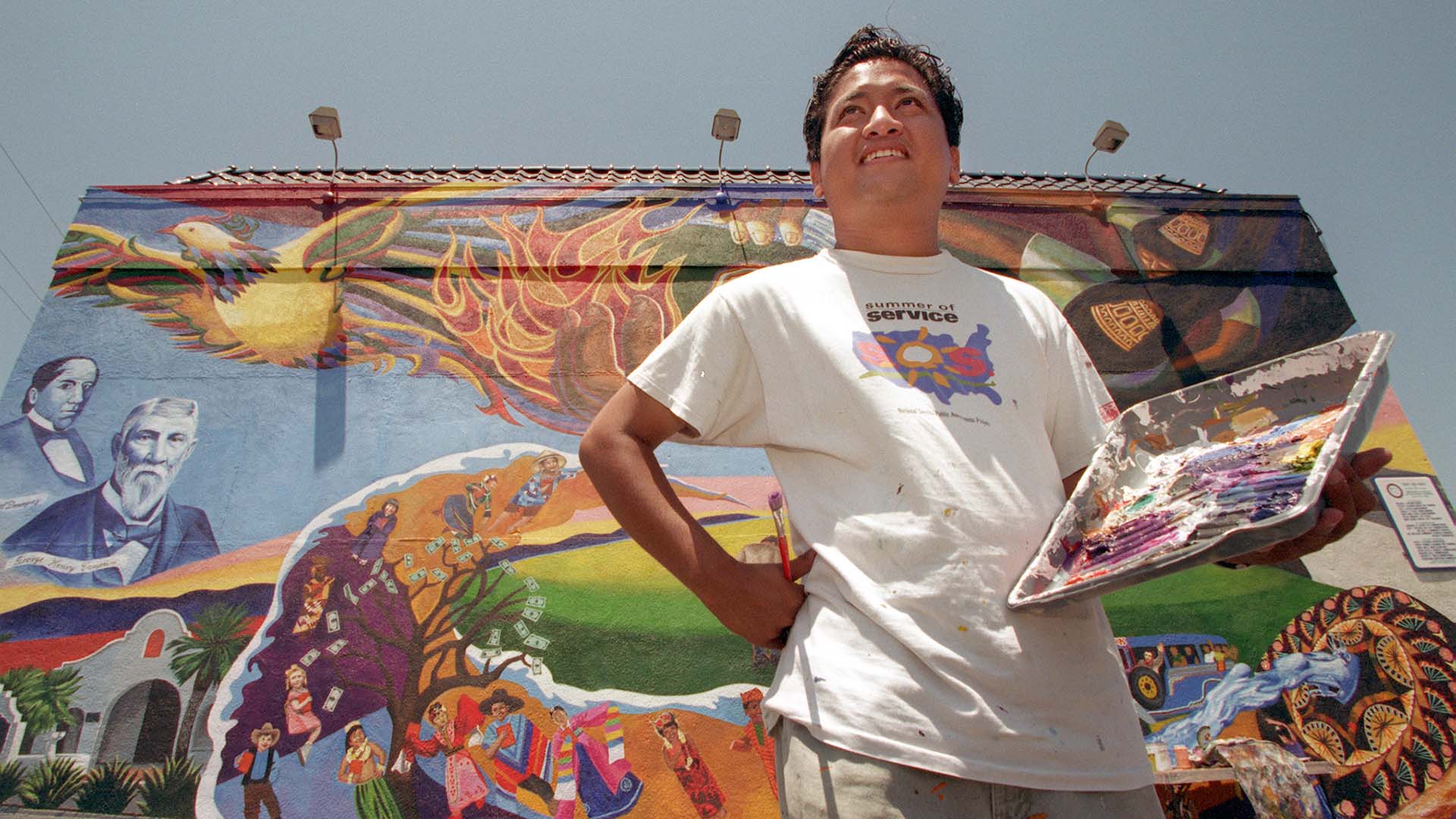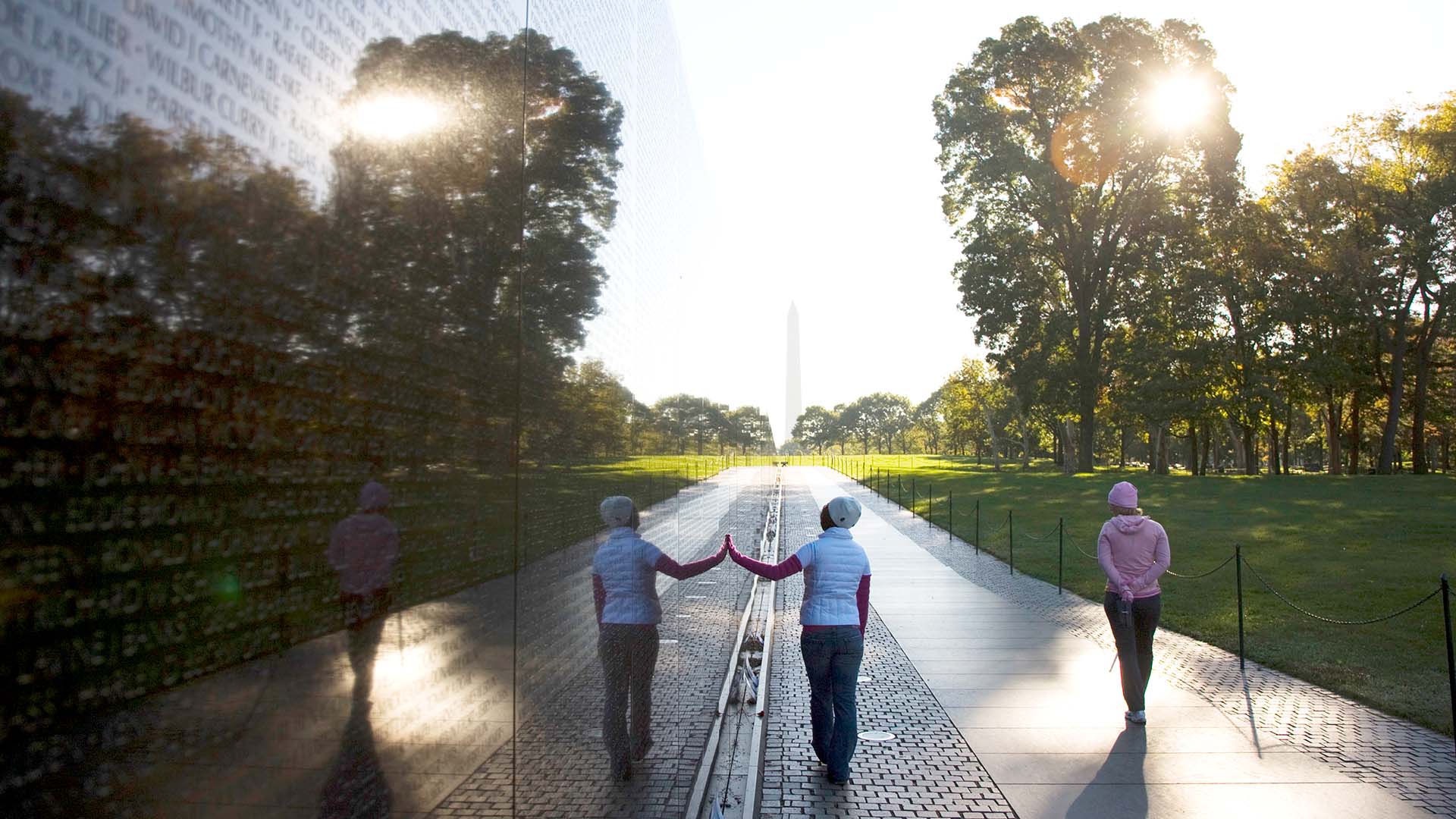Public art allows creations to be accessible to all, and there’s no shortage of it around the United States — this includes many pieces by Asian American and Pacific Islander artists. Here are a few inspired works to add to the itinerary of your next trip.
As always, check for travel restrictions and closures before planning your trip.
Vietnam Veterans Memorial; Washington, D.C.
Our nation’s capital holds a bevy of memorials, monuments and sculptures throughout the National Mall, and one of the most easily recognizable is the black granite Vietnam Veterans Memorial.
The memorial was designed by Chinese-American art student Maya Lin in 1982 after she won a nationwide call for artists to commemorate those who perished in the Vietnam War.
The 493-foot, V-shaped wall is composed of 140 panels filled with names of the fallen chiseled into the stone, a haunting reminder of the more than 58,000 veterans who were killed during the war or listed as missing in action.
Asian & Pacific Islander Public Art Tour; Denver, Colorado

Denver doesn’t merely showcase single pieces of public art created by AAPI and Asian artists, but offers an entire self-guided walking tour that features 18 murals, street artworks and sculptures throughout the Mile High City.
Highlights of the tour include Japanese-American Casey Kawaguchi’s mural of a samurai, “Mastery;” Shanghai-born Shan Shan Sheng’s colorful cold-cast glass titled “Swimming Under the Tree” as well as her “Autumn Leaves,” which hangs gently from the Rude Recreation Center; plus a number of large-scale murals by Cambodian-American graffiti artist Ratha Sok.
“希望. Hope. Act. The Fight for Freedom”; San Francisco, California
San Francisco’s Hemlock Alley has been transformed into a colorful art space thanks to murals by six artists following the theme “San Francisco — Its History and Its Diversity.”
One of the works was created by the muralist duo Elaine Chu and Marina Perez-Wong of Twin Walls Mural Company. The artists painted a young girl standing atop oversized flowers flying a dragon lantern in “希望. Hope. Act. The Fight for Freedom.” More of the duo’s work can be found throughout the Bay Area, including at Twitter’s corporate headquarters.
“I Still Believe in Our City”; New York City, New York
In response to the wave of anti-Asian hate crimes in New York City and beyond during the coronavirus pandemic, Thai- and Indonesian-American artist Amanda Phingbodhipakkiya partnered with the New York City Commission on Human Rights to create a public awareness campaign.
Her illustrations are paired with phrases such as “I did not make you sick” and “I am not your scapegoat” and were installed in subway stations, bus shelters and kiosks. Plus, her mural of Malcolm X and Yuri Kochiyama was installed at the Museum of the City of New York as a permanent artwork.
“Gintong Kasaysayan, Gintong Pamana”; Los Angeles, California

Created as a memorial to Filipino Americans in 1995, “Gintong Kasaysayan, Gintong Pamana’s” legacy still endures almost 30 years later. The 150-foot-long and 30-foot-tall mural was created by artist Eliseo Silva in Los Angeles’s Unidad Park, located in the city’s historic Filipinotown district.
The wall constitutes the entire western side of the park and chronicles historical Filipino and Filipino American leaders, as well as farm workers, lending to its Tagalog name, which translates to “Filipino Americans: A Glorious History, A Golden Legacy.”
“View from Gold Mountain”; Albuquerque, New Mexico
Outside Albuquerque’s Second Judicial District Courthouse rises a 16-foot pointed weight (a carpenter’s plumb bob, to be exact) representing balance and energy.
The sculpture was conceptualized by Seattle-based artists Cheryll Leo-Gwin and Stewart Wong as a tribute to the landmark 1882 court case Territory of New Mexico v. Yee Shun, when Shun appealed to have the right as a Chinese man to testify in court proceedings after he shot and killed another Chinese man.
This opened opportunities and rights for Asian people across the U.S. The final touch on the sculpture is a braid of hair woven up the side of the sculpture, a nod to the plaits worn by Chinese men.
U District Mural Walk; Seattle, Washington
Three of the seven stops on Seattle’s U District Mural Walk are works created by Asian-American artists, showcasing East and Southeast Asian influence in their messaging.
“Respect Beloved Community” by Erin Shigaki is comprised of a black-and-white photo of the 449 nikkei, orJapanese-American, students who were forced to leave the University of Washington to be sent to internment camps during World War II. Jewel-toned stripes and waves surround the image, which is painted onto the wall of a small restaurant.
Tori Shao’s “Magpies and Magnolias” was inspired by her grandparents in Shanghai, and the third work, by Amanda Phingbodhipakkiya, is a tribute to women in science.




